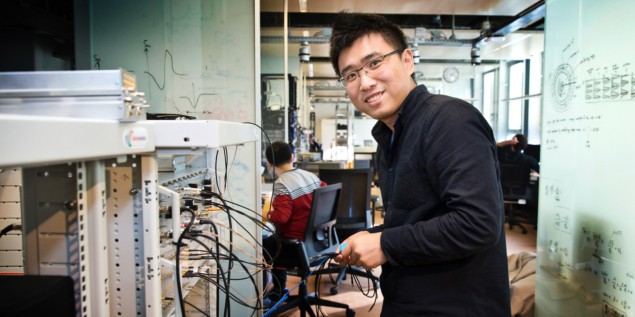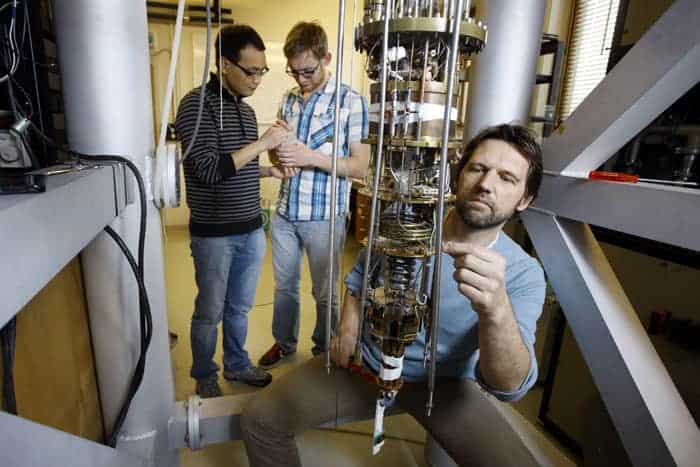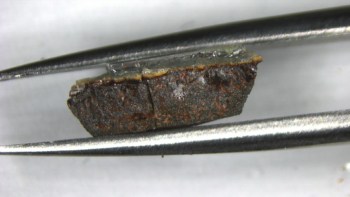
Some of the research discussed in this article is described in a paper in the journal Nature. That paper has since been retracted.
The strongest experimental evidence yet for the existence of Majorana quasiparticles in solids has been found by two independent groups of physicists. The research could lead to the creation of topologically-protected quantum computers that are robust to the harmful effects of environmental noise.
In 1937 the Italian physicist Ettore Majorana predicted a fermion that would behave as its own antiparticle. While no such particle has ever been found, it turns out that Majorana’s mathematics also describes “Majorana zero modes” in hybrid semiconductor/superconductor systems. This has led to the prediction of Majorana quasiparticles that can be both an electron and a positive hole at the same time.
In 2010, two groups of physicists showed theoretically that, in certain electric and magnetic fields, a semiconductor nanowire coupled to a superconductor should also produce Majorana quasiparticles. This is because an electron tunnelling into the superconductor would be reflected as a positive hole and result in a constant current at zero voltage.
Peak piques interest
Two years later, Leo Kouwenhoven of Delft University of Technology and colleagues observed a current peak at zero voltage, but it was only about 5% of the predicted height. Moreover, they were unable to verify that the height of the peak is independent of parameters such as the length of the nanowire.
“One of the big worries…is that there’s some other zero-energy bound state localized at the end of the wire,” says theoretician Felix von Oppen of the University of Berlin, who was involved in the 2010 research. He adds, “That would also lead to such a zero bias peak, but one would not expect it to occur as robustly at zero bias – one should be able to move it around – and most certainly one would not expect the height to be fixed”. Testing these properties has therefore been high on experimentalists’ wish lists.
Physicists who accept the 2012 results explained the disparity between the theoretical and experimental values by noting that the theory requires a clean interface between semiconductor and superconductor, and this was not the case experimentally. “You basically put a superconductor on top of a semiconductor,” explains Hao Zhang of Kouwenhoven’s Delft group. “The interface was very rough, and you had a lot of disorder and dirt, so when you measured the Majorana signature you also measured this dirt effect and the Majorana signature became very weak.”
Steady improvement
Since then, the Delft researchers have steadily improved the interface, and in the new research, they present results from a single indium antimonide nanowire partially covered with superconducting aluminium. “Now it’s basically atomically flat,” says Zhang: “There’s no defects, no dirt at all at the interface.”

First hint of Majorana fermions spotted in nanowires
Independently, Charles Marcus and colleagues at the University of Copenhagen arrived at similar results using slightly different techniques and nanowires made from indium arsenide antimonide rather than indium antimonide. Both groups confirmed that the zero-bias peak appears to be quantized at the fixed value theoretically predicted over a range of various different parameters.
These ultra-clean observations of Majorana zero modes have two consequences. Firstly, Zhang predicts that they will “convince most people in the community” of the existence of Majorana quasiparticles. Secondly, by showing that Majorana modes can be carefully manipulated like this, the results could lead to the use of Majorana zero modes for robust storage of quantum states in quantum computing.
Quantum braiding
“In our nanowire, we split one electron into two and put it on the wire’s two ends to create two Majorana fermions,” explains Zhang. “Because the quantum information is stored non-locally, local fluctuations don’t destroy it.” The researchers are now working towards “braiding” quantum information into topologically protected forms by moving Majorana fermions around each other: “The information in a knot doesn’t change if you just shake it – you have to take a pair of scissors and cut the fibres to destroy the information. That’s where the topological protection comes from,” explains Zhang.

Majorana ‘zero modes’ spotted in superconducting nanowires
Von Oppen reflects on the results, “On the one hand it’s very gratifying and promising to see that these things actually come out,” he says, “and on the other hand it’s really a tribute to fact that these samples have gotten a lot better over the past five or six years and the interface between the superconductor and the semiconductor has improved a lot.”
The Kouwenhoven group describes its work in Nature and the Marcus group’s research is described on arXiv.



